Secretary of State for the Northern Department
| Great Britain Office of the Secretary of State for the Northern Department | |
|---|---|
.svg.png) Coat of Arms of the Kingdom of Great Britain Government | |
| The Northern Department | |
| Style |
The Right Honourable (Formal prefix) ' |
| Member of | British Cabinet |
| Seat | Westminster, London |
| Appointer |
The British Monarch on advice of the Prime Minister |
| Term length | No fixed term |
| Formation | 1660-1782 |
| First holder | Sir William Morice |
| Final holder | David Murray, 7th Viscount Stormont |
The Secretary of State for the Northern Department was a position in the Cabinet of the government of Great Britain up to 1782, when the Northern Department became the Home Office.
History
Before the Act of Union, 1707, the Secretary of State's responsibilities were in relation to the English government, not the British. Even after the Union, there was still a separate Secretary of State for Scotland until 1746, though the post was sometimes vacant. This continued the previous Scottish government post of Secretary of State.
Before 1782, the responsibilities of the two Secretaries of State for the Northern and the Southern Departments were not divided up in terms of area of authority, but rather geographically. Both were responsible for England and Wales. The Secretary of State for the Northern Department, the more junior of the two, was responsible for foreign relations with the Protestant states of Northern Europe. The more senior Secretary of State for the Southern Department was responsible for relations with the Catholic and Muslim states of Europe. In 1782, the two Secretaries of State were reformed as the Secretary of State for the Home Department and the Secretary of State for Foreign Affairs.
During the 18th century, Secretaries of State for the Northern Department, if peers, were often Leaders of the House of Lords as well.
Secretaries of State for the Northern Department, 1660–1782
Included:[1]
| Portrait | Name Constituency |
Term of office | Notes | |
|---|---|---|---|---|
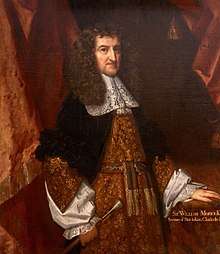 |
Sir William Morice MP for Plymouth |
27 May 1660 |
29 September 1668 | |
 |
Sir John Trevor MP for Arundel until 1661 MP for Great Bedwyn after 1661 |
29 September 1668 |
8 July 1672 | |
 |
Henry Coventry MP for Droitwich |
3 July 1672 |
11 September 1674 | |
 |
Sir Joseph Williamson MP for Thetford |
11 September 1674 |
20 February 1679 | |
 |
Robert Spencer The Earl of Sunderland |
10 February 1679 |
26 April 1680 | |
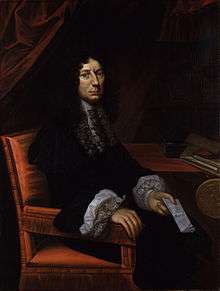 |
Sir Leoline Jenkins MP for Oxford University |
26 April 1680 |
2 February 1681 | |
 |
Edward Conway The Earl of Conway |
2 February 1681 |
January 1683 | |
 |
Robert Spencer The Earl of Sunderland |
28 January 1683 |
1684 | |
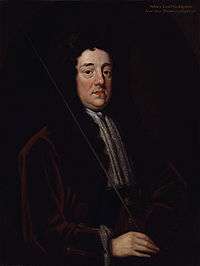 |
Sidney Godolphin MP for Helston |
17 April 1684 |
24 August 1684 | |
 |
Charles Middleton The Earl of Middleton MP for Winchelsea after 1685 |
24 August 1684 |
28 October 1688 | |
 |
Richard Graham The Viscount Preston MP for Cumberland |
29 October 1688 |
2 December 1688 | |
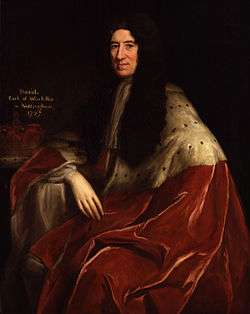 |
Daniel Finch The Earl of Nottingham |
5 March 1689 |
26 December 1690 | |
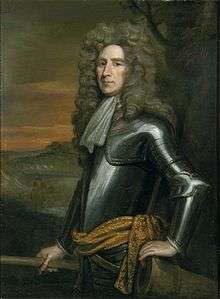 |
Henry Sydney The Viscount Sydney |
26 December 1690 |
3 March 1692 | |
 |
Sir John Trenchard MP for Poole |
23 March 1693 |
2 March 1694 | |
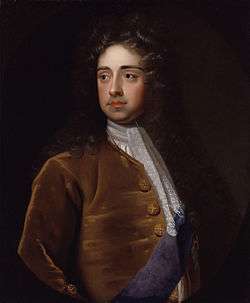 |
Charles Talbot The Duke of Shrewsbury |
2 March 1694 |
3 May 1695 | |
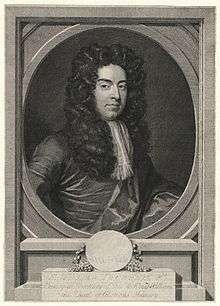 |
Sir William Trumbull MP for Oxford University |
3 May 1695 |
2 December 1697 | |
.jpg) |
James Vernon MP for Penryn until 1699 MP for Westminster after 1699 |
2 December 1697 |
5 November 1700 | |
 |
Sir Charles Hedges MP for Malmesbury |
5 November 1700 |
29 December 1701 | |
.jpg) |
James Vernon MP for Westminster |
4 January 1702 |
1 May 1702 | |
 |
Sir Charles Hedges MP for Malmesbury until 1702 MP for Calne after 1702 |
2 May 1702 |
18 May 1704 | |
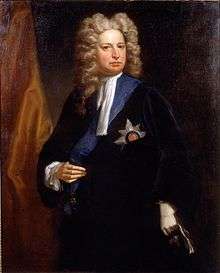 |
Robert Harley MP for Radnor |
16 May 1704 |
13 February 1708 | |
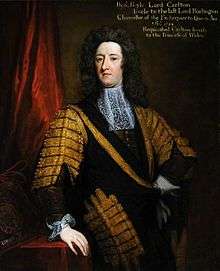 |
Henry Boyle MP for Westminster |
13 February 1708 |
21 September 1710 | |
.jpg) |
Henry St John The Viscount Bolingbroke MP for Berkshire until 1712 Viscount Bolingbroke after 1712 |
21 September 1710 |
17 August 1713 | |
 |
Sir William Bromley MP for Oxford University |
17 August 1713 |
17 September 1714 | |
.jpg) |
Charles Townshend The Viscount Townshend |
17 September 1714 |
12 December 1716 | |
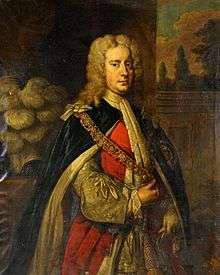 |
Charles Spencer The Earl of Sunderland |
12 April 1717 |
2 March 1718 | |
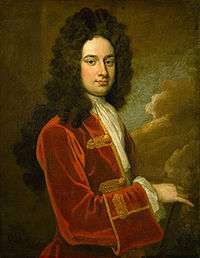 |
James Stanhope The Earl Stanhope |
19 March 1718 |
4 February 1721 | |
.jpg) |
Charles Townshend 2nd Viscount Townshend |
6 February 1721 |
16 May 1730 | |
%2C_Attributed_to_Godfrey_Kneller.jpg) |
William Stanhope The Lord Harrington |
19 June 1730 |
12 February 1742 | |
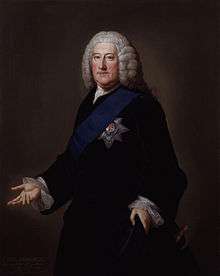 |
John Carteret The Lord Carteret |
12 February 1742 |
24 November 1744 | |
%2C_Attributed_to_Godfrey_Kneller.jpg) |
William Stanhope The Earl of Harrington |
24 November 1744 |
January 1746 | |
 |
John Carteret The Earl Granville |
12 February 1746 |
March 1746 |
as sole Secretary |
%2C_Attributed_to_Godfrey_Kneller.jpg) |
William Stanhope The Earl of Harrington |
March 1746 |
19 October 1746 | |
| Philip Dormer Stanhope The Earl of Chesterfield |
29 October 1746 |
6 February 1748 | ||
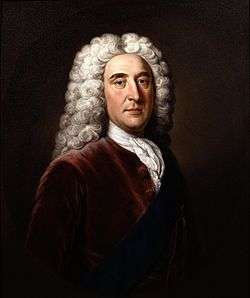 |
Thomas Pelham-Holles The Duke of Newcastle |
6 February 1748 |
23 March 1754 | |
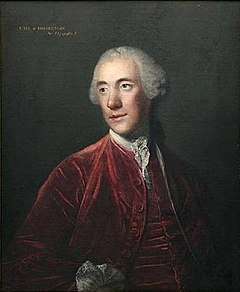 |
Robert Darcy The Earl of Holdernesse |
April 1757 |
June 1757 |
as sole Secretary |
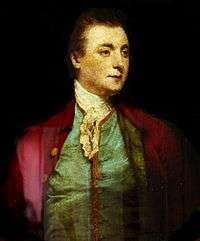 |
John Stuart The Earl of Bute |
25 March 1761 |
27 May 1762 | |
_by_William_Hoare_(1707-1792).jpg) |
George Grenville MP for Buckingham |
5 June 1762 |
9 October 1762 | |
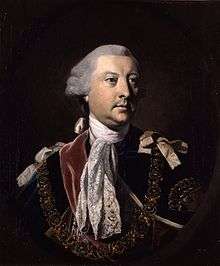 |
George Montague-Dunk The Earl of Halifax |
14 October 1762 |
9 September 1763 | |
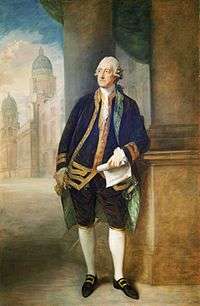 |
John Montagu The Earl of Sandwich |
9 September 1763 |
10 July 1765 | |
 |
George Montague-Dunk The Earl of Halifax |
September 1763 |
July 1765 | |
| Augustus Henry Fitzroy The Duke of Grafton |
12 July 1765 |
14 May 1766 | ||
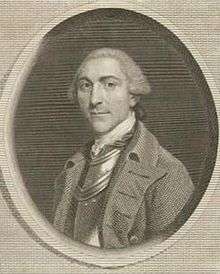 |
Henry Seymour Conway MP for Thetford |
23 May 1766 |
20 January 1768 | |
 |
Thomas Thynne The Viscount Weymouth |
20 January 1768 |
21 October 1768 | |
 |
William Nassau de Zuylestein The Earl of Rochford |
21 October 1768 |
19 December 1770 | |
 |
John Montagu The Earl of Sandwich |
19 December 1770 |
12 January 1771 | |
 |
George Montague-Dunk The Earl of Halifax |
22 January 1771 |
6 June 1771 | |
 |
Henry Howard The Earl of Suffolk |
12 June 1771 |
7 March 1779 | |
 |
David Murray The Viscount Stormont |
27 October 1779 |
27 March 1782 | |
References
- ↑ Sainty, J. C. "Lists of appointments British History Online". www.british-history.ac.uk. Originally published by University of London, London, 1973. Retrieved 12 March 2017.
Sources
- Anson, Sir William Reynell (1892). The Law and Custom of the Constitution. Clarendon Press. pp. 157–158. Retrieved 2007-08-18.
- Sainty, J.C. (1973). Office-Holders in Modern Britain: Volume 2 Officials of the Secretaries of State 1660-1782. pp. 22–58. Retrieved 2007-08-19.